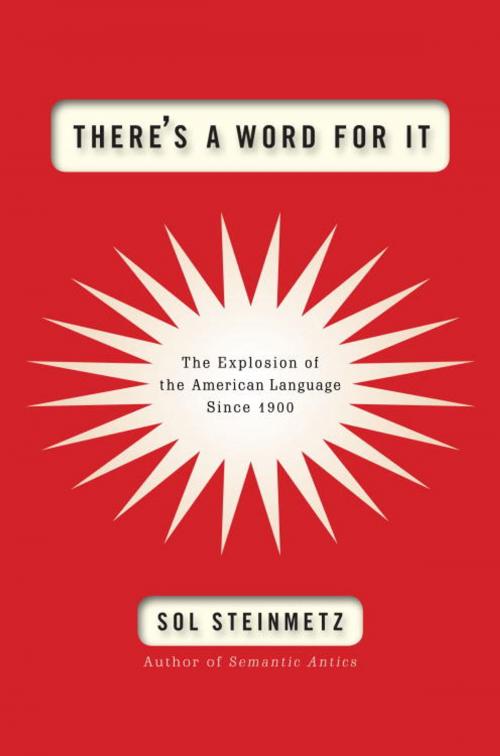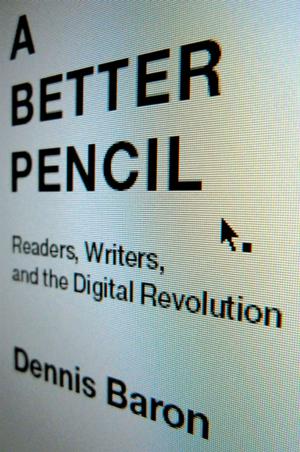There's a Word for It
The Explosion of the American Language Since 1900
Nonfiction, Reference & Language, Reference, Almanacs & Trivia, Word Lists, Language Arts, Reading, Vocabulary, Linguistics| Author: | Sol Steinmetz | ISBN: | 9780307717634 |
| Publisher: | Crown/Archetype | Publication: | April 27, 2010 |
| Imprint: | Crown | Language: | English |
| Author: | Sol Steinmetz |
| ISBN: | 9780307717634 |
| Publisher: | Crown/Archetype |
| Publication: | April 27, 2010 |
| Imprint: | Crown |
| Language: | English |
Word geeks (1984), rejoice! Crack open these covers and immerse yourself in a mind-expanding (1963) compendium of the new words (or new meanings of words) that have sprung from American life to ignite the most vital, inventive, fruitful, and A-OK (1961) lexicographical Big Bang (1950) since the first no-brow (1922) Neanderthal grunted meaningfully.
From the turn of the twentieth century to today, our language has grown from around 90,000 new words to some 500,000—at least, that’s today’s best guesstimate (1936). What accounts for this quantum leap (1924)? In There’s a Word for It, language expert Sol Steinmetz takes us on a supercalifragilisticexpialidocious (1949) joyride (1908) through our nation’s cultural history, as seen through the neato (1951) words and terms we’ve invented to describe it all. From the quaintly genteel days of the 1900s (when we first heard words such as nickelodeon, escalator, and, believe it or not, Ms.) through the Roaring Twenties (the time of flappers, jalopies, and bootleg booze) to the postwar ’50s (the years of rock ’n’ roll, beatniks, and blast-offs) and into the new millennium (with its blogs, Google, and Obamamania), this feast for word lovers is a boffo (1934) celebration of linguistic esoterica (1929).
In chapters organized by decade, each with a lively and informative narrative of the life and language of the time, along with year-by-year lists of words that were making their first appearance, There’s a Word for It reveals how the American culture contributed to the evolution and expansion of the English language and vice versa. Clearly, it’s must-reading (1940). And not to disparage any of the umpteen (1918) other language books on the shelf—though they have their share of hokum (1917) and gobbledygook (1944)—but this one truly is the bee’s knees and the cat’s pajamas (1920s).
Word geeks (1984), rejoice! Crack open these covers and immerse yourself in a mind-expanding (1963) compendium of the new words (or new meanings of words) that have sprung from American life to ignite the most vital, inventive, fruitful, and A-OK (1961) lexicographical Big Bang (1950) since the first no-brow (1922) Neanderthal grunted meaningfully.
From the turn of the twentieth century to today, our language has grown from around 90,000 new words to some 500,000—at least, that’s today’s best guesstimate (1936). What accounts for this quantum leap (1924)? In There’s a Word for It, language expert Sol Steinmetz takes us on a supercalifragilisticexpialidocious (1949) joyride (1908) through our nation’s cultural history, as seen through the neato (1951) words and terms we’ve invented to describe it all. From the quaintly genteel days of the 1900s (when we first heard words such as nickelodeon, escalator, and, believe it or not, Ms.) through the Roaring Twenties (the time of flappers, jalopies, and bootleg booze) to the postwar ’50s (the years of rock ’n’ roll, beatniks, and blast-offs) and into the new millennium (with its blogs, Google, and Obamamania), this feast for word lovers is a boffo (1934) celebration of linguistic esoterica (1929).
In chapters organized by decade, each with a lively and informative narrative of the life and language of the time, along with year-by-year lists of words that were making their first appearance, There’s a Word for It reveals how the American culture contributed to the evolution and expansion of the English language and vice versa. Clearly, it’s must-reading (1940). And not to disparage any of the umpteen (1918) other language books on the shelf—though they have their share of hokum (1917) and gobbledygook (1944)—but this one truly is the bee’s knees and the cat’s pajamas (1920s).















